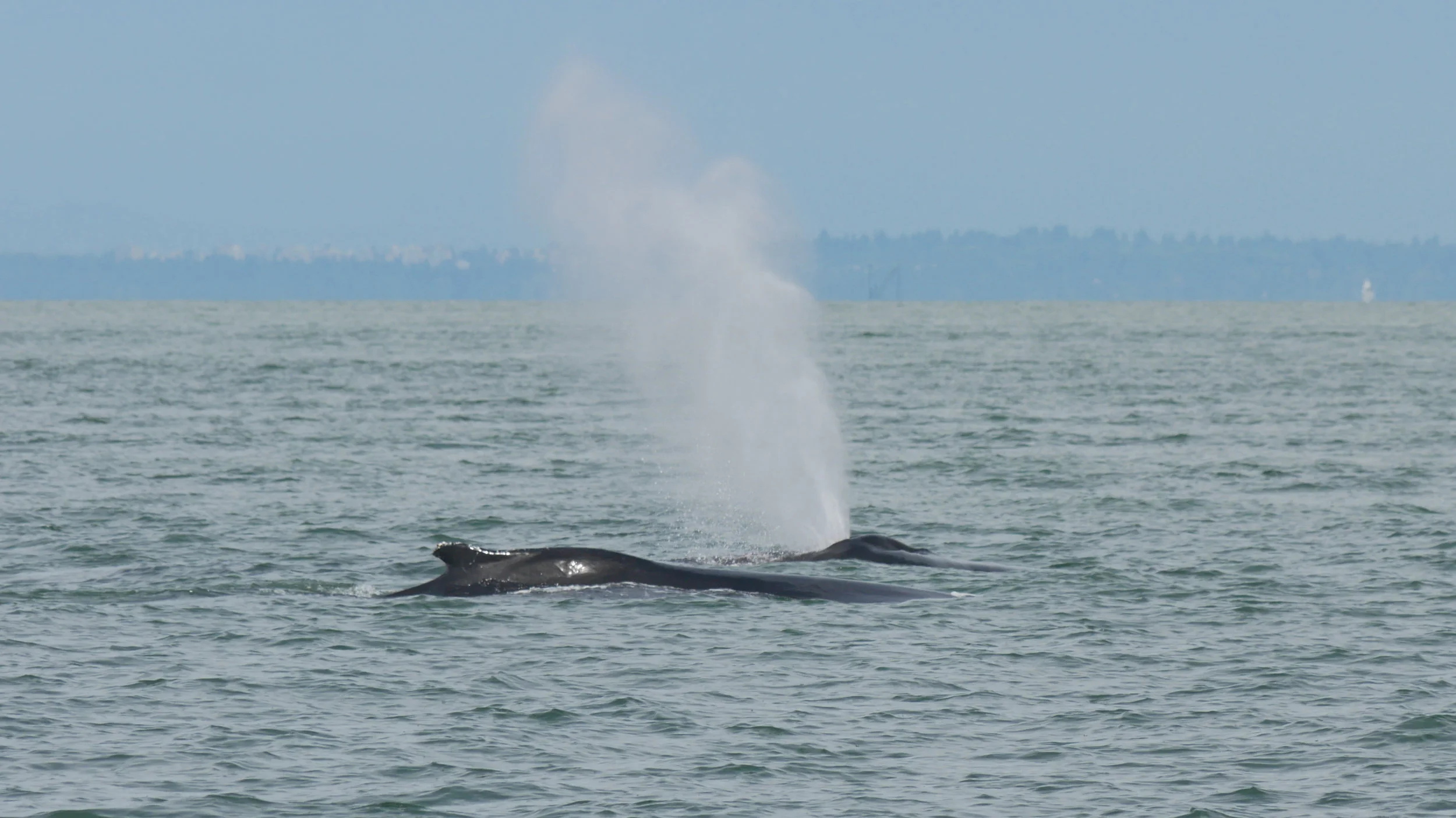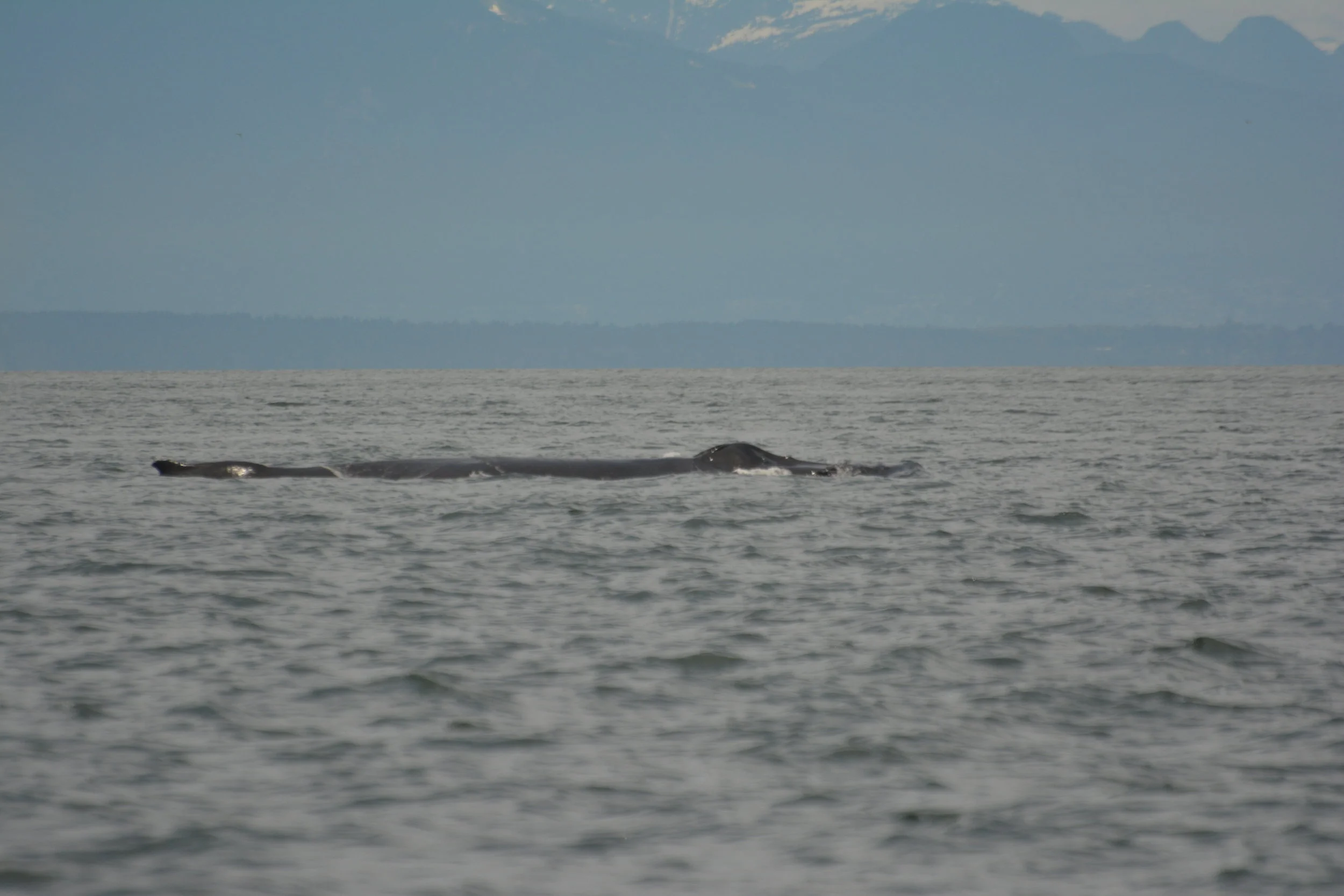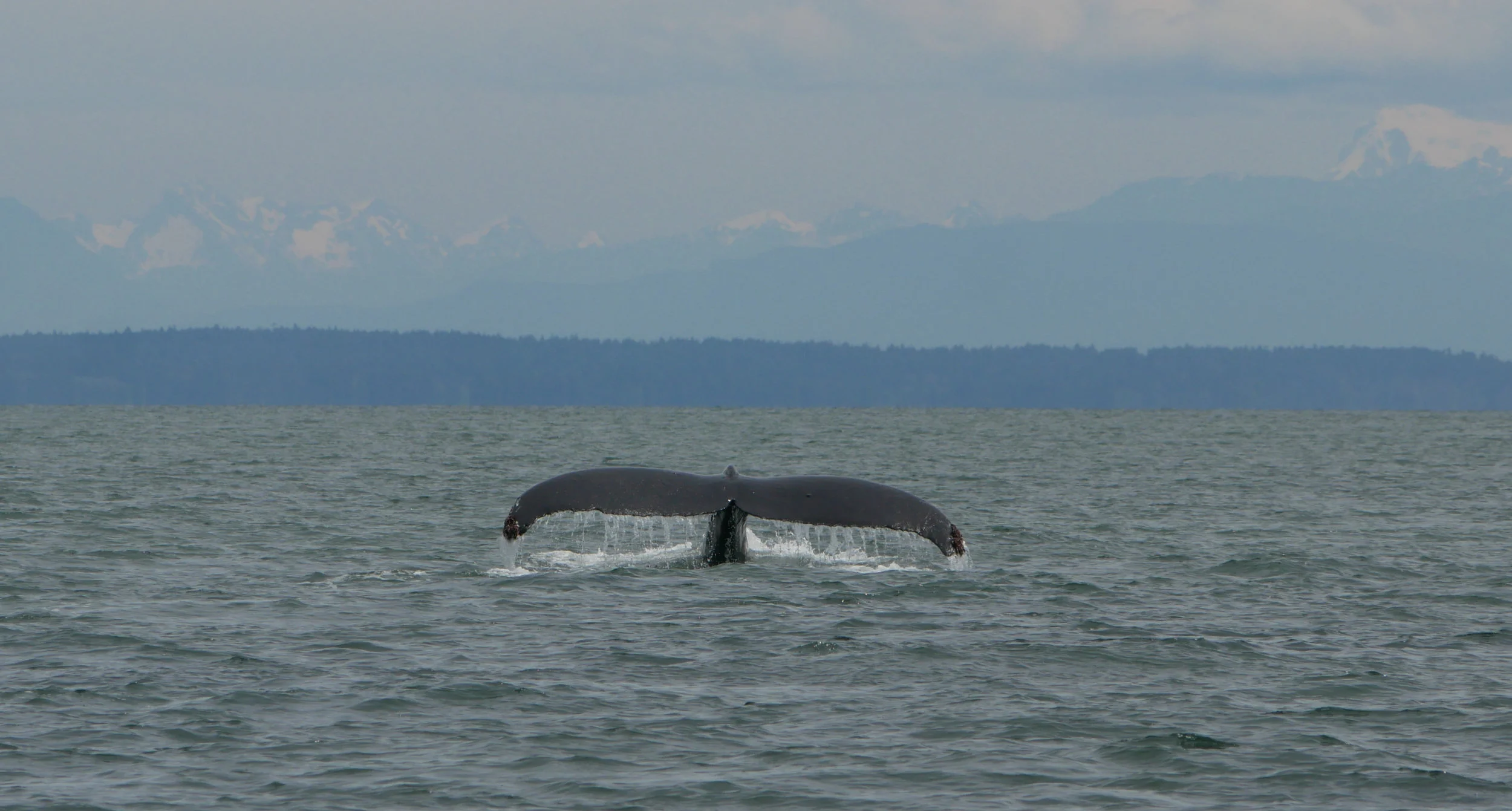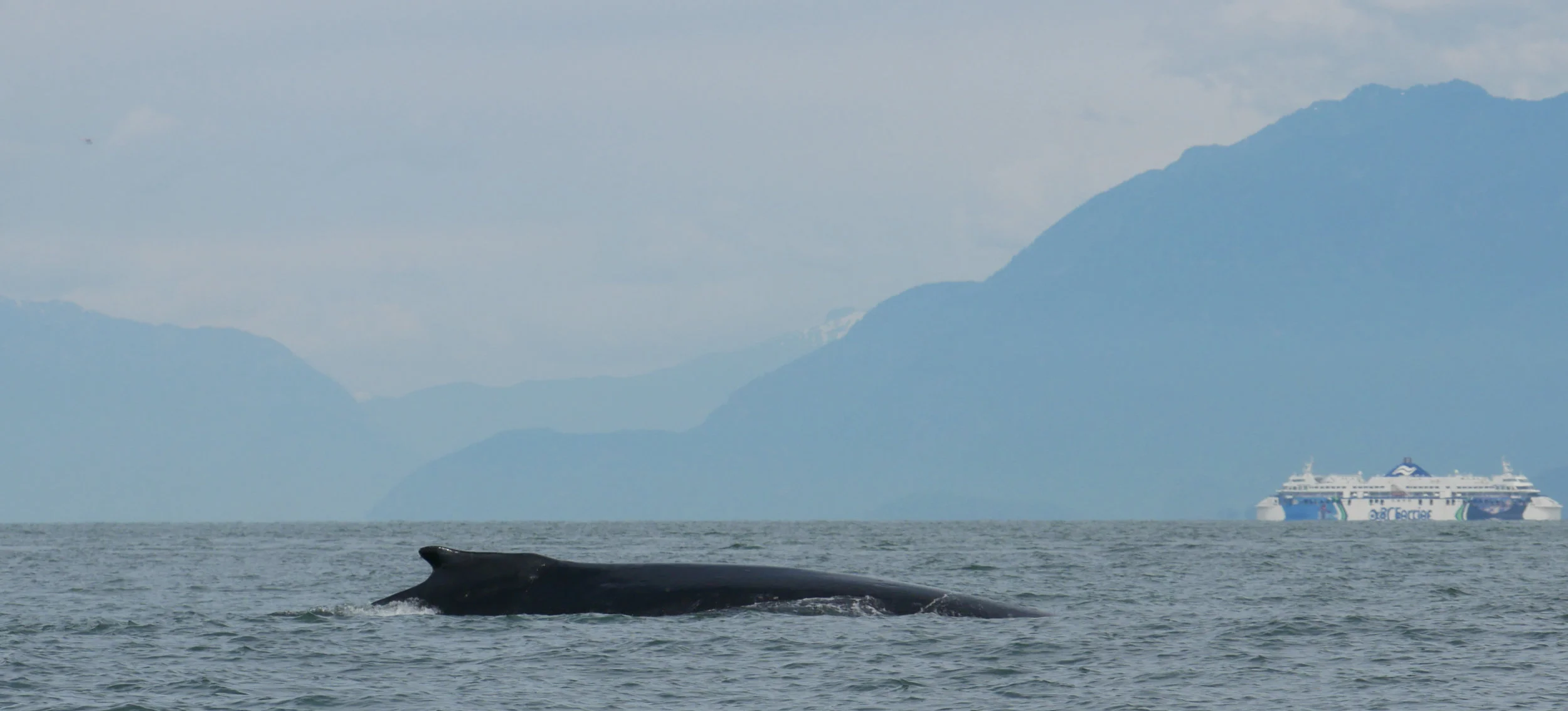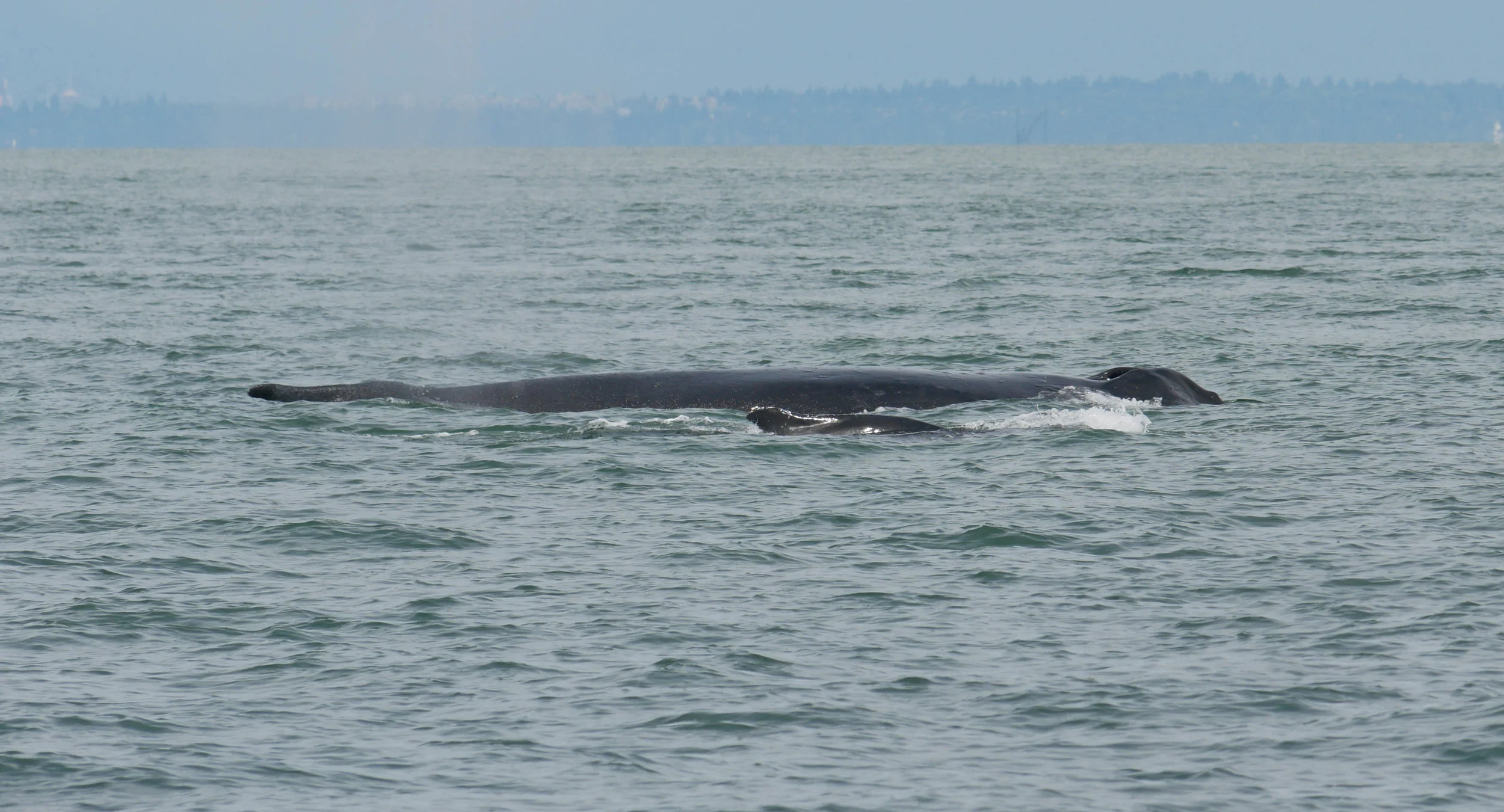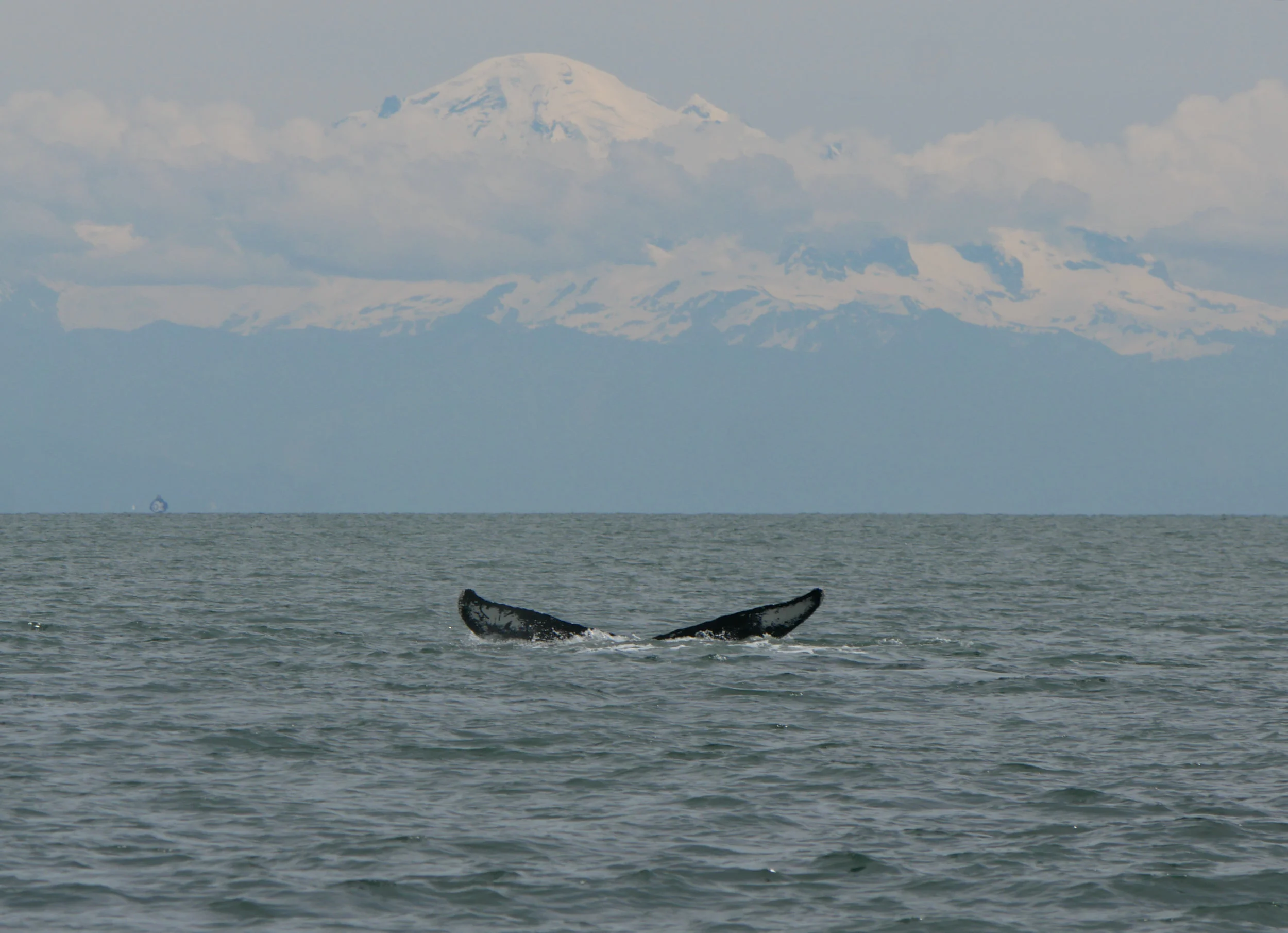June 9, 2019 - Heather and Raptor; Best Friends of the Salish Sea!
This year we have been lucky enough to encounter Heather and Raptor quite often, and they always seem to be travelling together. Although typically thought of as solitary creatures humpbacks are being seen travelling in pairs or groups quite frequently.
Photo by Rodrigo Menezes.
Photo by Cheyenne Brewster.
Humpbacks will commonly be found near areas of high density food sources. Typically areas like outside of passageways will have high food density because of the amount of water circulation and upwelling. This upwelling brings nutrients up to the surface where phytoplankton will be able to use it to grow and reproduce. This phytoplankton acts as the base of a very complex food chain which the humpback whales tap into right at the base! They are filter feeders, meaning that they use their huge mouths to take in big gulps of water, containing millions of plankton, and use their tongues to expel the water through their baleen plates to filter their food from the water.
Heather going for a dive with Mt. Baker in the background. Photo by Rodrigo Menezes.
It can be hard to believe that these giant animals are surviving off of such tiny food particles but its true! They will consume over 5000 pounds of food a day! Thats a whole lot of food!
Photo by Rodrigo Menezes.
Photo by Rodrigo Menezes.
When travelling together we will sometimes see cooperative feeding occurring with humpback whales. This is when the humpbacks will work together to increase their efficiency. Farther north in Alaska they can do what’s known as “Bubble Net Feeding” where they release bubbles from their blow holes forming a net and spiral inwards, trapping their prey. They then lunge up together through the trapped concentrated prey getting large mouthfuls of food. Here we don’t see feeding that coordinated, instead we will see lunge feeding, where they lunge at the surface with an open mouth catching the prey gathered there. We will sometimes see the whales travelling together coordinating their lunges so less escapes from them.
Photo by Rodrigo Menezes.
Its thought that Heather and Raptor might be doing this coordinated feeding together while they’re in the Salish Sea and that’s why we see them so often together.
Photo by Rodrigo Menezes.
No matter why they are travelling together it’s amazing to see these two gentle giants surfacing together out on the water. You can see from the pictures below just how beautiful it is to get to see these animals in their natural environment.
Photo by Rodrigo Menezes.
Photo by Rodrigo Menezes.
Photo by Rodrigo Menezes.
Photo by Rodrigo Menezes.
Photo by Rodrigo Menezes.
If you want a chance to come out and experience this for yourself you can book online through our website or give us a call at (250) 667-5177. Adventure awaits!

